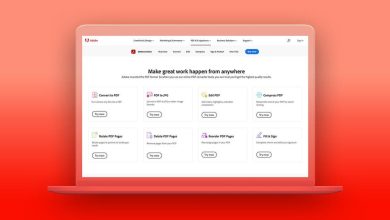Great digital citizenship is key to best practice CX in a digital economy

The modern business world runs on data. The sum of all actions, interactions and transactions serves as the currency that drives digital business forward—and allows organizations to innovate and transform like never before.
But using data to deliver insights and support informed customer experience decisions comes with great responsibility: Companies must take privacy and data ethics seriously. They must provide consumers choice and control around what data they entrust to companies, and organizations must be transparent in how they use it.
Data used the right way can help organizations deliver relevant, personalized, and innovative product and customer experiences.
“Good stewardship requires careful and responsible management,” observes Scott Schlesinger, senior vice president and global data practice leader at technology integration firm Ness Digital Engineering. “A good steward manages and controls data while granting access where, when and by whom it’s needed.”
Contents
The rise of the data stewards in CX
This explosion of online consumer data, as well as the increase in employees on the hook for delivering customer experience (marketing, sales, IT, customer support, etc.), has made “data stewardship” an important responsibility for organizations today.
The data steward isn’t just one person within the organization, either. Many times, teams from IT, compliance and legal work together to build out policies for data governance and data usage. Therefore, it is important for CX professionals to know what the corporate policies and/or legal guidelines are around the handling and use of data. This can be achieved through adequate training and communication.
Choosing the right platform for data management
As data stewards become an important part of delivering customer experiences, the onus is on brands to ensure that the tools and services they are relying on to deliver these experiences intentionally incorporate functionality to support their data management needs.
A May 2020 report titled, The New Imperative for Corporate Data Responsibility from consulting services firm KPMG, found that 87 percent of U.S. consumers view data privacy as a fundamental right, 56 percent believe that companies must prioritize giving consumers more control over their own data, and an overwhelming 91 percent indicate that corporations should take the lead in establishing these controls.
“Data governance means taking care of data to be sure it is secure, used ethically, and that it’s compliant with regulations across all the multi-jurisdictional requirements.”
Janet Balis, Americas customer and growth market leader and CMO practice leader at consulting firm EY
Adds Ronell Hugh, head of product marketing for Adobe Experience Platform: “Organizations that respect their customers through transparent and ethical data privacy practices can forge tighter and stronger connections with their customers. A solid data framework supports digital transformation while ensuring that customer data is used in a responsible way.”
Respecting data governance as a brand differentiator
A good data stewardship strategy isn’t just the right thing to do, it also represents a significant opportunity for businesses to build trust and customer lifetime value (CLV).
This reinforces the importance of a strong data governance framework. This includes clear policies and procedures for managing data throughout its lifecycle—along with mechanisms to handle data discovery, governance and disposal. In addition, there is a need for monitoring, logging, reporting and auditing to ensure that people are adhering to policies across the project spectrum.
“The right technology, data stewardship, governance, and process to manage security and regulatory compliance drives marketing effectiveness and optimization across the full customer journey,” Balis explains. “It may even be an opportunity to differentiate their brand in the marketplace.”
Transparency in how data is being used is key
The key to assembling the right pieces of this puzzle is to make sure customers understand the value exchange taking place when they share their data. Not surprisingly, the meaning of “value” can change significantly based on industry, company, geography and other factors.
Customers shouldn’t have to struggle through pages of legalese to understand a privacy policy. “Transparency is not just about establishing good policies,” Balis says. “You have to be clear about what data you have, how you use it, what choices consumers have about what they share, and what options they have to let you continue using or not.”
Get with the times: Update technology for good data visibility
A common obstacle for organizations is limited data visibility—and a lack of flexibility and agility—due to legacy IT and software systems, Adobe’s Hugh says. This includes data storage that isn’t designed for digital business and chunks of data sitting in spreadsheets. Without an ability to seamlessly manage data, it’s difficult to gain insight and the rules of engagement become blurry, which is risky business.
“In order to deliver personalization and engagement, organizations require a modern digital framework that maximizes insight,” Hugh explains.
Hugh also points out that every organization should consider having a person specifically charged with overseeing data governance and privacy. Moreover, business leaders should more actively participate in the design and operation of the data management framework so that the governance framework is more in tune with the marketplace and customers.
Iterate your data governance strategy on an ongoing basis
According to Balis, it is just as important to set up a data governance framework as it is to consistently reevaluate and iterate on it. Organizations must consider whether assumptions, practices, tools and technologies that may have been relevant in the past have become dated, or lost their value. One proven way to do this is to conduct an analysis of current regulatory privacy compliance standards across the U.S. and globally and compare the results to an internal audit of current first-, second- and third-party data use across an organization’s value chain, she says.
Mapping internal data practices is paramount. There is a need to examine data access privileges and rights across the organization, along with the software and security controls used for data governance. This includes authentication, encryption, deidentification and deduplication. Data must be visible only where and when it’s needed, Schlesinger warns.
Communicate the importance of data governance with employees
Communication is also at the heart of good digital citizenship. Best practice organizations keep employees, partners and customers informed about changes in policies, practices and technology, Balis says. This can include easily-overlooked browser updates, changes in cookies or tracking, or when major platforms alter their privacy policies.
Finally, it’s wise to keep employees up to date on today’s fast changing data management landscape. This includes how regulatory measures are evolving, changes in technologies, and ongoing shifts in consumer attitudes, sentiment and preferences.
Says Balis: “The biggest evolution will continue to be toward more granular, navigable and dynamic control of data, the conditions under which it is shared and the value exchange that follows.”
Adds Adobe’s Hugh: “Organizations that build a robust data protection and privacy framework have an opportunity to differentiate themselves through positive consumer experiences and build brand value.”
Source : Adobe








